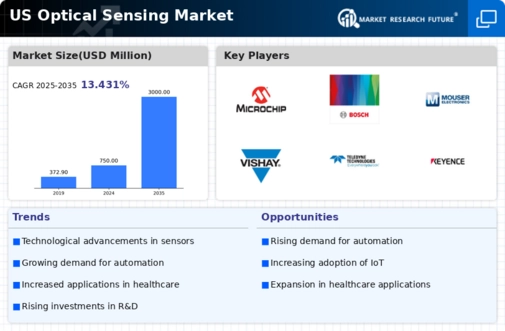The US Optical Sensing Market is an evolving field characterized by significant technological advancements and competitive dynamics. This market plays a crucial role across various sectors including consumer electronics, automotive, healthcare, and industrial applications, with heightened focus on accuracy, efficiency, and miniaturization of sensing devices. The competition is intensified by a range of manufacturers and developers aiming to innovate and differentiate their products. Market players are increasingly concentrating on research and development, strengthening supply chains, and forming strategic partnerships to enhance their offerings.
With an increasing demand for smart devices and automation, the US Optical Sensing Market is poised for continued growth and transformation, highlighting the need for robust competitive strategies among key participants.Microchip Technology has established itself as a strong competitor in the US Optical Sensing Market through innovation and a robust product portfolio. The company focuses on providing high-performance optical sensors that cater to various applications, including industrial automation and automotive safety systems. Microchip Technology's strengths lie in its commitment to technological advancement and customer-centric solutions, which enable it to deliver reliable and efficient optical sensing devices.
The company’s integrated circuits and microcontrollers complement its optical sensing technologies, allowing for seamless integration in electronic systems. Moreover, Microchip Technology has fostered partnerships with industry leaders to enhance its market presence, thus solidifying its position and expanding its reach within the US.Bosch is a key player in the US Optical Sensing Market, recognized for its broad range of products and innovative solutions that span various sectors like automotive, consumer electronics, and industrial applications.
The company specializes in MEMS-based optical sensors, which are employed in applications ranging from autonomous vehicles to precise imaging solutions in consumer devices. Bosch’s strengths include its strong brand reputation, extensive research and development capabilities, and a commitment to sustainability, which resonate well with modern market demands. In terms of market presence, Bosch has engaged in strategic mergers and acquisitions to enhance its technology portfolio and expand its operational reach across the US. The company continuously invests in developing advanced optical sensing technologies, positioning itself as a leader in the industry by addressing emerging trends and customer needs efficiently.





















